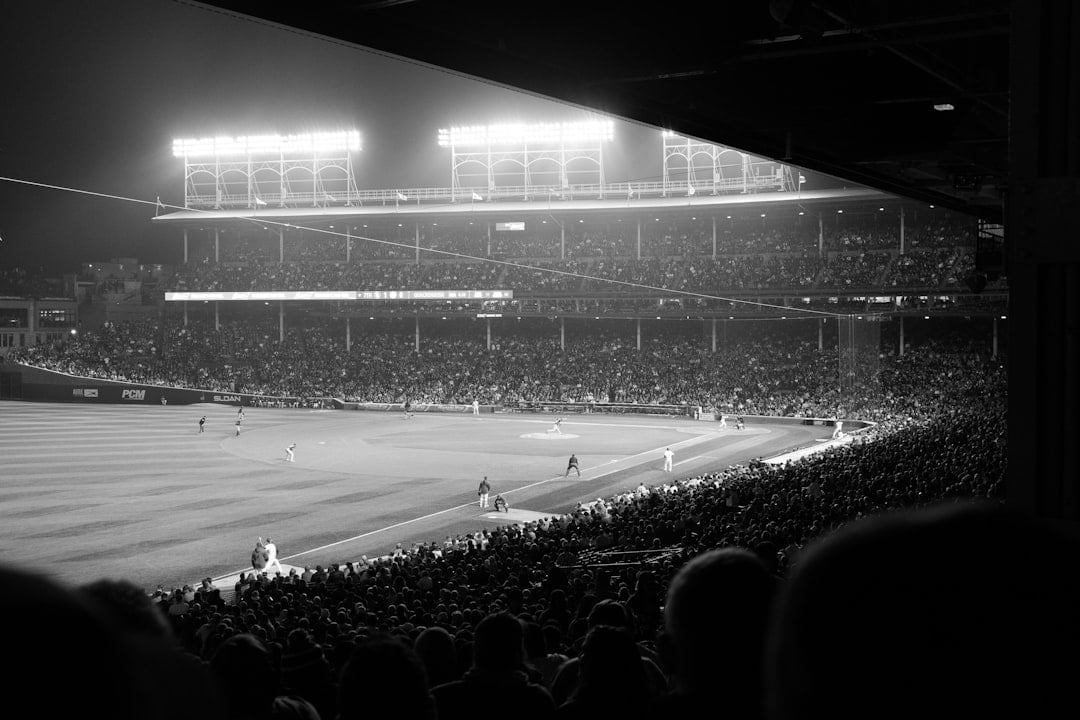AR VR for brands: 10 Powerful Benefits in 2025
The New Reality of Customer Engagement
AR VR for brands has become a transformative marketing approach in today’s digital landscape. For brands looking to create immersive customer experiences, here’s what you need to know:
- Augmented Reality (AR): Overlays digital content onto the real world through smartphones or AR glasses
- Virtual Reality (VR): Creates fully immersive digital environments requiring headsets
- Key Benefits: Increased engagement (75% retention vs 5% for traditional methods), higher conversion rates (up to 20% lift), and reduced return rates (up to 25%)
- Popular Applications: Virtual try-ons, interactive product demonstrations, immersive storytelling, gamified promotions
According to Snapchat research, 69% of consumers consider AR the future of shopping, yet 52% of retailers say they’re not ready to integrate these technologies into their experiences. This gap represents both a challenge and an opportunity for forward-thinking brands.
AR and VR technologies allow customers to visualize products in their own environments, try items virtually before purchasing, and engage with brands in ways that were previously impossible. Major brands across industries—from IKEA and Nike to Coca-Cola and Christian Dior—have already implemented successful AR/VR campaigns, seeing engagement rates up to three times higher than traditional advertising.
The true value of immersive technology lies not in flashy gimmicks but in creating meaningful connections with customers. When implemented thoughtfully, AR and VR experiences can drive powerful business outcomes while delighting users with innovative interactions.
I’m Samir ElKamouny AV, an entrepreneur and marketing expert who has helped brands leverage AR VR for brands to create meaningful customer connections and drive business growth. My experience with immersive technologies has shown me how these tools can transform customer engagement when implemented with clear strategic objectives.
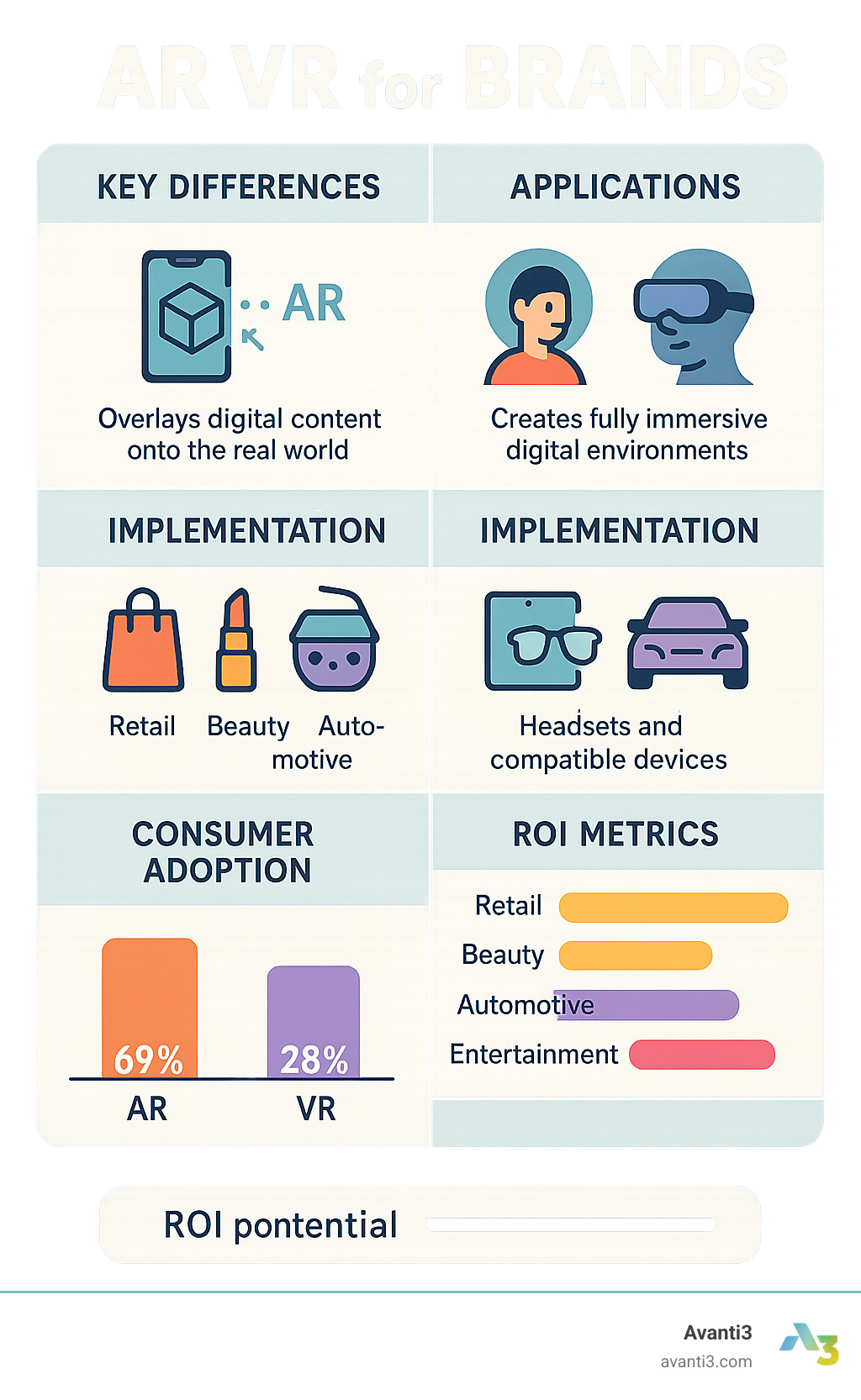
AR VR for brands word guide:
– augmented reality marketing
– digital brand engagement
– digital engagement platforms
What You Will Learn
In this comprehensive guide, we’ll explore the full spectrum of AR VR for brands, covering everything from fundamental concepts to advanced implementation strategies. You’ll find:
- The key differences between AR and VR technologies and when to use each
- Proven benefits and ROI metrics from successful brand campaigns
- How to map immersive experiences across the entire customer journey
- Implementation challenges and practical solutions
- Emerging trends shaping the future of immersive marketing
- A roadmap for getting started, regardless of your budget or technical expertise
Whether you’re just beginning to explore immersive technologies or looking to optimize your existing AR/VR strategy, this guide provides the insights you need to create memorable brand experiences that drive measurable results.
Understanding AR and VR in Marketing
Let’s start with the basics – what exactly are these immersive technologies that everyone’s talking about? Think of them as two different ways to blend digital and physical worlds.
Augmented Reality (AR) brings digital elements into your real environment. It’s like having magical glasses that show you extra information layered on top of what you’re already seeing. Most people access AR through the smartphones they already own, making it incredibly accessible.
Virtual Reality (VR), on the other hand, is a complete escape into a digital world. When you put on a VR headset, your physical surroundings disappear, replaced by whatever digital environment has been created. It’s total immersion – like stepping through a portal into another dimension.
Between these technologies stretches a spectrum of experiences that blend reality and digital elements in different proportions. What’s best for your brand depends on your specific goals.
| Feature | Augmented Reality (AR) | Virtual Reality (VR) |
|---|---|---|
| Immersion Level | Partial – digital overlay on real world | Complete – fully digital environment |
| Typical Devices | Smartphones, tablets, AR glasses | VR headsets, controllers |
| User Environment | Real-world with digital elements | Completely virtual |
| Content Creation | 3D objects, animations, filters | Complete 3D environments, 360° content |
| Brand Applications | Product visualization, virtual try-ons, interactive packaging | Virtual showrooms, immersive storytelling, training |
| Consumer Adoption | Higher (uses existing devices) | Lower (requires specialized hardware) |
| Implementation Cost | Lower to moderate | Moderate to high |
Augmented Reality Basics
AR works its magic by using your device’s camera to see the world, then adding digital content on top of that view. It’s like having a sixth sense that reveals hidden information around you.
The beauty of AR lies in its accessibility. With over 3.5 billion smartphone users worldwide, your brand can reach massive audiences through technology they already carry in their pockets. No special equipment needed!
There are several flavors of AR experiences:
– Marker-based AR activates when your camera recognizes specific images or QR codes
– Markerless AR uses your device sensors to place digital objects in your space without needing triggers
– Location-based AR appears when you reach specific GPS coordinates
– Web AR delivers experiences through browsers without requiring app downloads
As Nike’s Global Digital Innovation Director beautifully put it: “AR removes the barrier between imagination and reality, letting customers engage with products in entirely new ways.”
Virtual Reality Basics
VR creates completely immersive digital worlds that transport you somewhere else entirely. When done well, your brain actually begins to accept the virtual environment as real – that’s the magic of presence.
Key elements that make VR so powerful include:
360° environments surround you completely in digital worlds. Spatial audio changes based on your position and movement, making sounds come from natural directions. Motion tracking follows your movements and translates them into the virtual world, while haptic feedback adds physical sensations that make digital interactions feel real.
While VR requires specialized hardware, the experiences can be profoundly impactful. Christian Dior Parfums finded that VR experiences resulted in 41% higher emotional engagement compared to traditional video content, creating lasting brand impressions that translate to customer loyalty.
Choosing Between AR & VR
When deciding which technology fits your brand needs, consider these essential factors:
Campaign objectives should guide your choice. AR excels at enhancing real-world experiences and letting customers visualize products in their own space. VR shines at creating immersive brand stories and deep emotional connections.
Audience access varies significantly between technologies. AR reaches broader audiences through existing devices, while VR delivers deeper engagement to smaller audiences with specialized equipment.
Budget considerations matter too. AR implementations typically cost less and scale more easily than VR experiences, making them accessible for brands of all sizes.
Content strategy affects your choice as well. AR works beautifully for short, frequent interactions, while VR excels at creating longer, more memorable experiences.
As the CMO of Maybelline New York noted after their record-breaking AR mirror campaign: “The right technology isn’t about being cutting-edge—it’s about meeting customers where they are with experiences that solve real problems.”
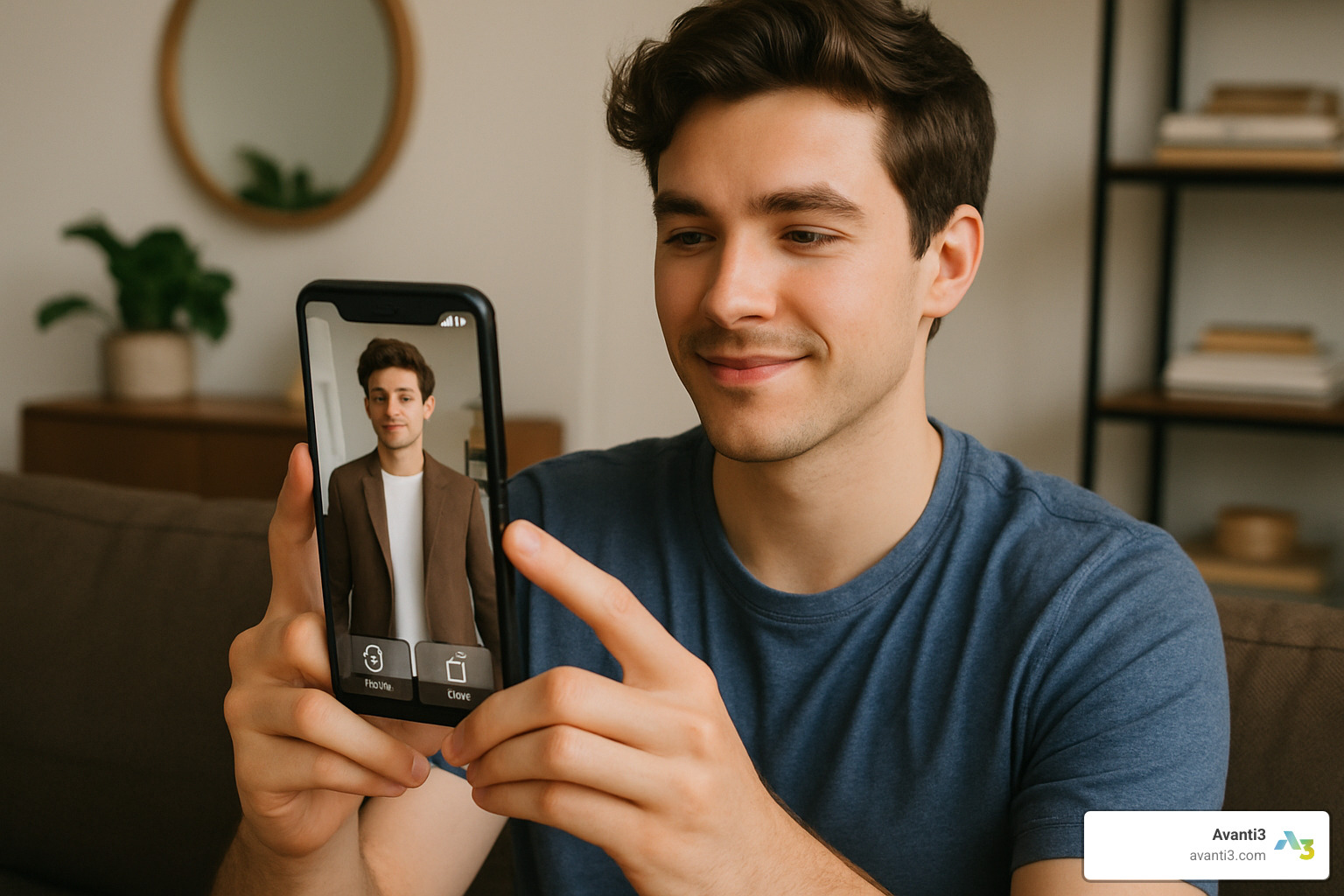
AR VR for Brands: Why It Matters in 2024
The world of immersive technology is absolutely booming right now. By 2024, global AR/VR spending is expected to hit a staggering $72.8 billion, growing at 54% annually. For forward-thinking brands, this isn’t just an interesting trend—it’s becoming a must-have in your marketing toolkit.
AR VR for brands has graduated from “experimental tech” to “essential strategy” for connecting with today’s consumers. As traditional ads lose their punch, these immersive technologies create the meaningful connections that modern shoppers crave.
The timing couldn’t be better for diving into immersive experiences. Several factors are converging to create the perfect opportunity:
Nearly every smartphone now supports AR capabilities, whether you’re Team iPhone or Team Android. The costs of creating 3D content have plummeted, making these technologies more accessible than ever. Consumers have grown comfortable with AR through Snapchat filters and Pokémon Go. The Apple Vision Pro is introducing mixed reality to the mainstream. And with 5G networks expanding, we can finally deliver complex AR experiences without frustrating lag.
As the Revolut CEO observed after their wildly successful AR portal campaign: “We’re witnessing the birth of spatial commerce—where digital and physical retail converge into seamless experiences that customers actually prefer.”
Key Benefits of AR VR for Brands
The results brands are seeing from immersive tech aren’t just impressive—they’re transformative across every stage of the customer journey.
When it comes to grabbing and holding attention, AR experiences achieve a remarkable 75% retention rate, compared to just 5% for traditional content. This isn’t just a minor improvement—it’s a complete rethinking of engagement. Niantic’s partnership with Circle K for Rewarded AR ads in Pokémon Go saw a mind-blowing 76% engagement rate with 95% of users completing the experience.
Conversion rates jump by 20-40% when customers can visualize products in AR before buying. IKEA’s Place app, which lets you see how over 3,000 furniture pieces would look in your actual home, has slashed return rates by 35%.
Speaking of returns, virtual try-ons typically reduce returns by 25%—saving money and reducing environmental impact. Marcolin found their Guess AR campaign engagement was 44% higher than platform benchmarks.
The emotional impact is just as powerful. VR experiences create 27% stronger emotional connections than traditional video, building deeper brand loyalty. Christian Dior Parfums reached over 4 million people with their AR Beauty Try-On, with 41% actively engaging with the experience.
Perhaps most valuable for long-term strategy, these experiences generate rich behavioral data that can inform everything from product development to personalization. Toyota collects detailed insights on customer preferences for colors and features through their AR vehicle visualization tool.
For more on implementing these powerful solutions, check out our AR Marketing Solutions page.
How AR VR for Brands Drives Engagement
The magic of immersive technologies comes from several key engagement factors:
Gamification turns brand interactions into playful experiences people actually want to participate in. Vodafone’s “Elf and Seek” AR game had 245,000 players hunting for virtual elves to win prizes, driving both online buzz and in-store traffic.
User-generated content flows naturally from AR experiences. Warner Bros’ Barbie AR filters generated millions of organic impressions as users shared their transformed looks across social media—essentially becoming volunteer brand ambassadors.
The novelty factor of well-executed AR/VR still creates genuine excitement. When Maybelline New York launched the world’s largest AR mirror campaign, it generated 3 million organic views and mentions from people simply amazed by the experience.
Personalization takes on new dimensions in immersive environments. L’Oréal Garnier’s Vitaverse experience provided customized product recommendations based on each user’s virtual try-on choices, creating a truly custom shopping journey.
As one Snap executive perfectly summarized: “When brands give users the tools to express themselves creatively, they’re not just building engagement—they’re building advocates.”
Scientific Proof Points
The effectiveness of these technologies isn’t just marketing hype—it’s backed by solid cognitive science:
People remember only 10% of what they read and 20% of what they hear, but they retain a remarkable 75% of what they experience through interactive AR/VR. Our brains process visual information 60,000 times faster than text. Emotional responses to immersive experiences are 3.5 times stronger than to traditional media. And perhaps most importantly for brands, purchase intent jumps by 20% when consumers can visualize products in their own environment.
As research from XR Guru notes: “The immersive nature of AR/VR creates stronger neural connections, resulting in better information retention and more persuasive experiences.” For deeper insights, explore this scientific research on learning retention.
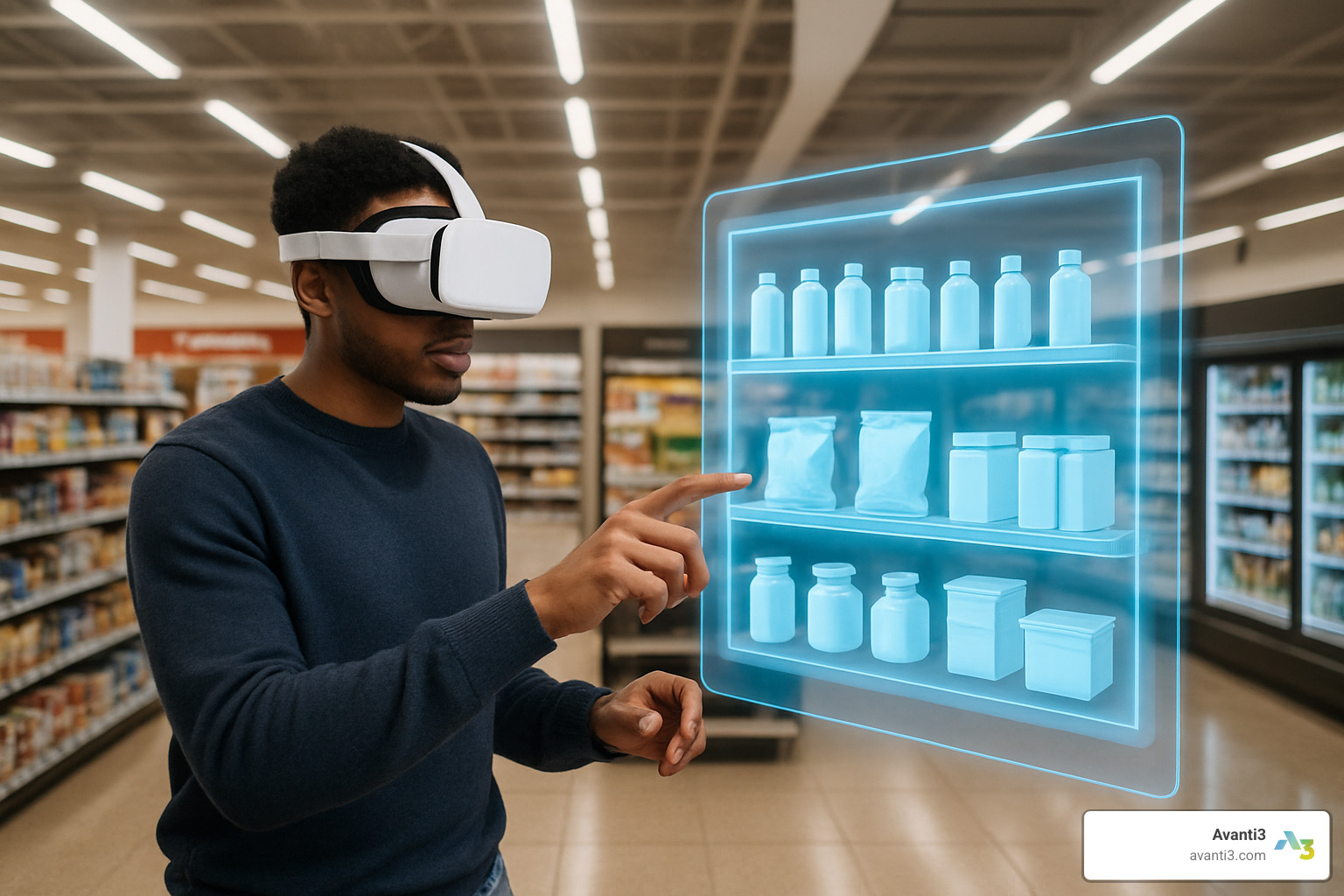
Mapping AR/VR Across the Customer Journey
The magic of AR VR for brands happens when these technologies aren’t just one-off gimmicks, but thoughtfully woven throughout the entire customer experience. Like chapters in a compelling story, each touchpoint builds on the last, creating a cohesive journey that guides consumers from findy to loyalty.
Findy & Awareness
First impressions matter, and immersive tech helps brands make unforgettable ones:
When Coca-Cola launched their #TakeATasteNow campaign, they transformed ordinary billboards into interactive tasting experiences. Passersby could simply point their phones at these digital displays across 13 UK locations and virtually sample the product—no physical samples needed. It was like magic that stopped people in their tracks.
Location-based AR has proven particularly powerful for driving foot traffic. The Pokémon Go partnership with Circle K didn’t just achieve a remarkable 76% engagement rate—it actually got gamers off their couches and into stores to open up digital rewards. This blend of digital play and physical presence creates what marketers now call “phygital” experiences.
Social AR lenses turn users into brand ambassadors. When Warner Bros created Snapchat lenses for Dune: Part Two, they weren’t just advertising—they were inviting fans to become characters from the film’s universe. As these transformed selfies spread across social media, awareness multiplied organically through trusted networks.
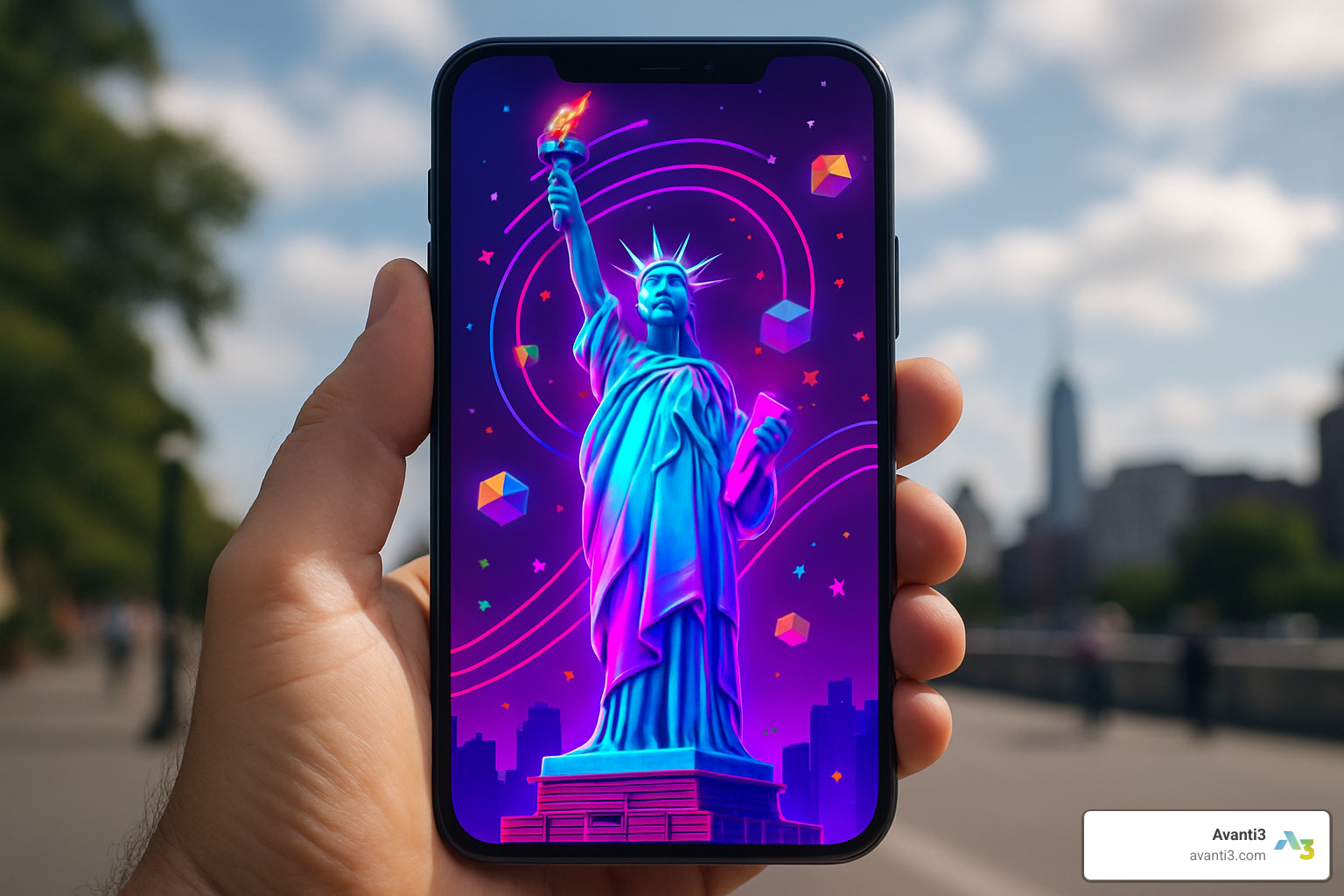
Snap’s “Wait’ll You See This” campaign took this concept to monumental proportions by changing global landmarks through AR. These spectacular visual changes didn’t just catch the eye of passersby—they generated media coverage and social sharing that extended far beyond the initial audience.
Consideration & Try-On
As customers move deeper into their journey, AR and VR help them evaluate products in meaningful contexts:
Christian Dior Parfums removed the guesswork from makeup shopping with their AR Beauty Try-On campaign. Over 400,000 virtual lipstick try-ons later, customers found their perfect shades without stepping foot in a store. Similarly, Marcolin made eyewear shopping less risky by letting customers virtually model different sunglasses styles from home.
IKEA’s Place app solved one of home furnishing’s biggest headaches: will that sofa actually fit and look good in my living room? Their AR visualization tool places virtual furniture in real spaces with 98% accuracy. As IKEA’s Digital Change Manager put it, “AR removes the biggest barrier to purchase—the inability to imagine how products will look in your own space.”
For products that require more immersive evaluation, brands like Toyota have created virtual showrooms where customers can explore vehicles in detail, customize features, and even take simulated test drives. These experiences are particularly valuable for high-consideration purchases when visiting physical locations isn’t convenient.
Want to explore these possibilities for your brand? Learn more about our Augmented Reality Marketing solutions.
Purchase & Checkout
At the crucial moment of decision, immersive technologies can reduce hesitation and boost confidence:
Smart retailers are now integrating AR visualization directly into the purchase flow. This timely “see it in your space” moment just before checkout has been shown to reduce cart abandonment by up to 30%—turning “maybe later” into “yes, now.”
Luxury brands have finded that VR pop-up stores create the perfect blend of exclusivity and accessibility. These limited-time virtual destinations generate the urgency of traditional pop-ups while allowing anyone to “visit” regardless of their location.
Beauty and consumer packaged goods companies are using AR to preview product packaging, creating anticipation for the unboxing experience while reducing surprises that lead to returns. This small but meaningful touchpoint bridges the gap between digital purchase and physical delivery.
Post-Purchase & Loyalty
The journey doesn’t end at purchase—in fact, that’s where some of the most valuable immersive experiences begin:
Philips has largely replaced confusing paper instruction manuals with interactive AR guides that show exactly how to use products in real-time. These intuitive visual instructions reduce support calls while dramatically improving the out-of-box experience.
Fashion houses now host virtual fashion shows and product launches in VR, giving loyal customers front-row access to exclusive events regardless of their location. These shared experiences create community among customers who might never meet in person.
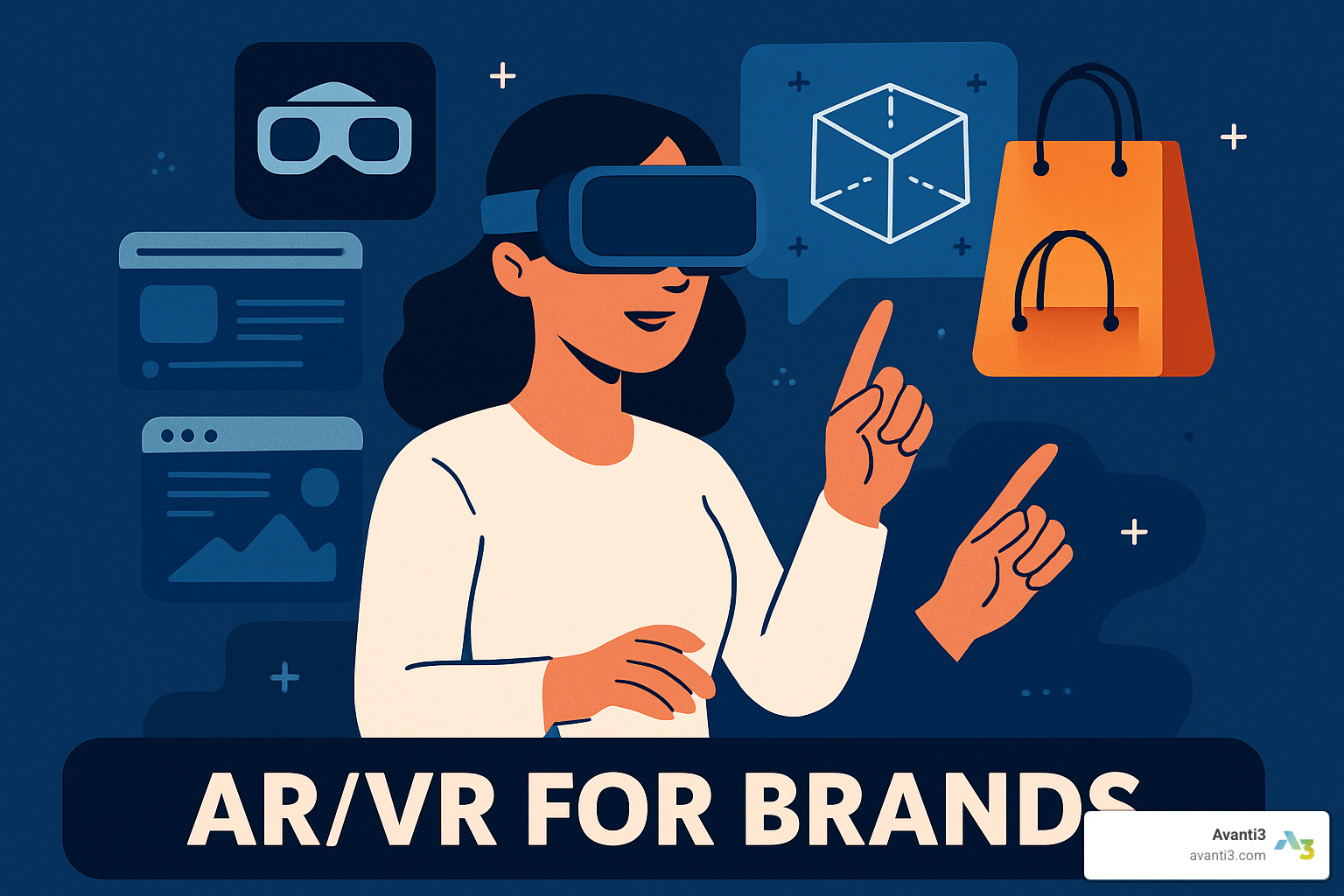
Malfy Gin transformed ordinary bottle labels into portals to Italian coastal experiences with their “Escape to a Malfy World” campaign. This clever use of AR-enabled packaging added ongoing value to the physical product while encouraging social sharing long after purchase.
Forward-thinking brands are now exploring blockchain-verified digital collectibles as loyalty rewards. These exclusive NFTs give customers unique digital assets they can display in virtual environments—creating both status symbols and community connection points.
What we’ve finded at Avanti3 is that the brands seeing the greatest success with immersive technologies aren’t creating isolated experiences. Instead, they’re crafting connected journeys that guide customers naturally from awareness through advocacy, with each immersive touchpoint building on the last.
Implementation Challenges & Best Practices
Let’s face it – implementing AR VR for brands isn’t always smooth sailing. While the potential rewards are enormous, there are real challenges that every brand must steer. The good news? With the right approach, these problems can become stepping stones to success.
Hardware accessibility remains one of the biggest barriers, especially for VR. With headsets still relatively expensive and not widely owned, many brands find themselves limited in reach. That’s why starting with smartphone-based AR makes so much sense – it meets customers where they already are. As one retail executive told me, “We reached 40 times more customers with our AR filter than we ever could have with a VR installation.”
Creating high-quality 3D assets is another common roadblock. Those beautiful, realistic product visualizations don’t materialize out of thin air – they require skill, time, and investment. Smart brands are starting with their bestsellers and gradually building their digital inventory. Photogrammetry (creating 3D models from photographs) has been a game-changer for many of our clients, dramatically reducing production time and costs.
The user experience can make or break your immersive campaign. I’ve seen brilliant concepts fail simply because they were too complicated to use. Most people have limited patience for learning new interfaces. When Sephora simplified their AR try-on to require just two taps, completion rates jumped by 38%. Test with your grandmother, not your tech team!
Privacy concerns deserve serious attention in the AR/VR space. These technologies can potentially capture data about users’ physical environments, raising important ethical questions. Transparency builds trust – clearly communicate what data you’re collecting and why. Always provide straightforward opt-out options that don’t punish users who choose not to share.
Measuring success with traditional metrics often falls short for immersive experiences. While click-through and conversion rates matter, they don’t tell the whole story. Develop custom KPIs that capture both engagement depth (time spent, interaction frequency) and business outcomes (conversion lift, return rate reduction).
As noted in Marketing Dive’s analysis How Augmented Reality Can — and Can’t — Help Your Brand, “The gap between AR potential and retail readiness represents both a challenge and an opportunity for forward-thinking brands.”
Budget & Technology Planning
You don’t need a Silicon Valley budget to create compelling immersive experiences. I’ve seen startups create more engaging AR campaigns than multinational corporations by being smart about their approach.
Start with an MVP (minimum viable product) that tests your core concept before going all-in. A simple WebAR experience can often be developed for $5,000-$10,000 – far less than a full app. This approach lets you gather real user data and refine your concept before making larger investments.
Existing platforms offer tremendous value. Snapchat, Instagram, and TikTok have sophisticated AR development tools and massive built-in audiences. When Allbirds launched their shoe try-on filter on Instagram, they reached 1.2 million users in the first week without building any custom technology.
Cross-platform development tools like Unity and Unreal Engine help maximize your investment by creating experiences that work across multiple devices. This “create once, deploy everywhere” approach can reduce development costs by up to 60%.
Partnerships can be a powerful way to share both costs and audiences. When two complementary brands collaborate on an immersive experience, both benefit from expanded reach and shared development costs. As the Digital Innovation Director at Revolut observed after their successful AR campaign: “The key is starting small, measuring carefully, and scaling what works—not trying to build the metaverse overnight.”
Design & Accessibility Principles
Creating inclusive immersive experiences isn’t just the right thing to do – it’s good business. Accessible design expands your potential audience and often improves the experience for everyone.
Intuitive interactions should be your north star. The best AR/VR experiences feel almost invisible, with interfaces that users understand instinctively. Use familiar gestures for AR (pinch to zoom, tap to select) and clear visual cues for VR navigation. When users have to think about how to use your experience, you’ve already lost them.
Accessibility considerations must be baked in from the start, not tacked on at the end. Include options for text-based alternatives, adjustable contrast, and alternative control methods. Not everyone perceives color the same way or has the same level of dexterity. Testing with diverse users will reveal blind spots in your design.
Performance optimization is crucial for smooth experiences across device types. Nothing kills engagement faster than lag or crashes. Be realistic about what different devices can handle, and create adaptive experiences that automatically adjust complexity based on the user’s hardware.
Safety guidelines are particularly important for VR. Always include clear instructions and design experiences that can be enjoyed while seated to accommodate different physical abilities. Consider time limits to prevent discomfort from extended VR sessions.
Measurement & Optimization
Without effective measurement, you’re flying blind. But standard web analytics often miss the unique value of immersive experiences.
Define clear KPIs that connect to business objectives. Beyond basic engagement metrics, look at dwell time (how long users spend in the experience), completion rates (what percentage finish key interactions), and most importantly, conversion impact (how the experience influences purchase behavior).
Heat-map analytics provide fascinating insights into how users engage with immersive content. By tracking where users look and interact in 3D space, you can identify high-engagement zones and overlooked areas. One luxury retailer finded users were spending 70% of their time examining product details that weren’t even highlighted in traditional photography.
A/B testing works just as well for AR/VR as it does for websites. Create variations to determine which elements drive the strongest results. One beauty brand found that realistic lighting in their AR try-on increased conversion by 23% compared to standard rendering.
Qualitative feedback complements your quantitative data by revealing the emotional impact of your experiences. User interviews and surveys help uncover the “why” behind the numbers. As one retail executive noted: “The data we collect doesn’t just measure campaign performance—it transforms our understanding of customer preferences in ways traditional analytics never could.”
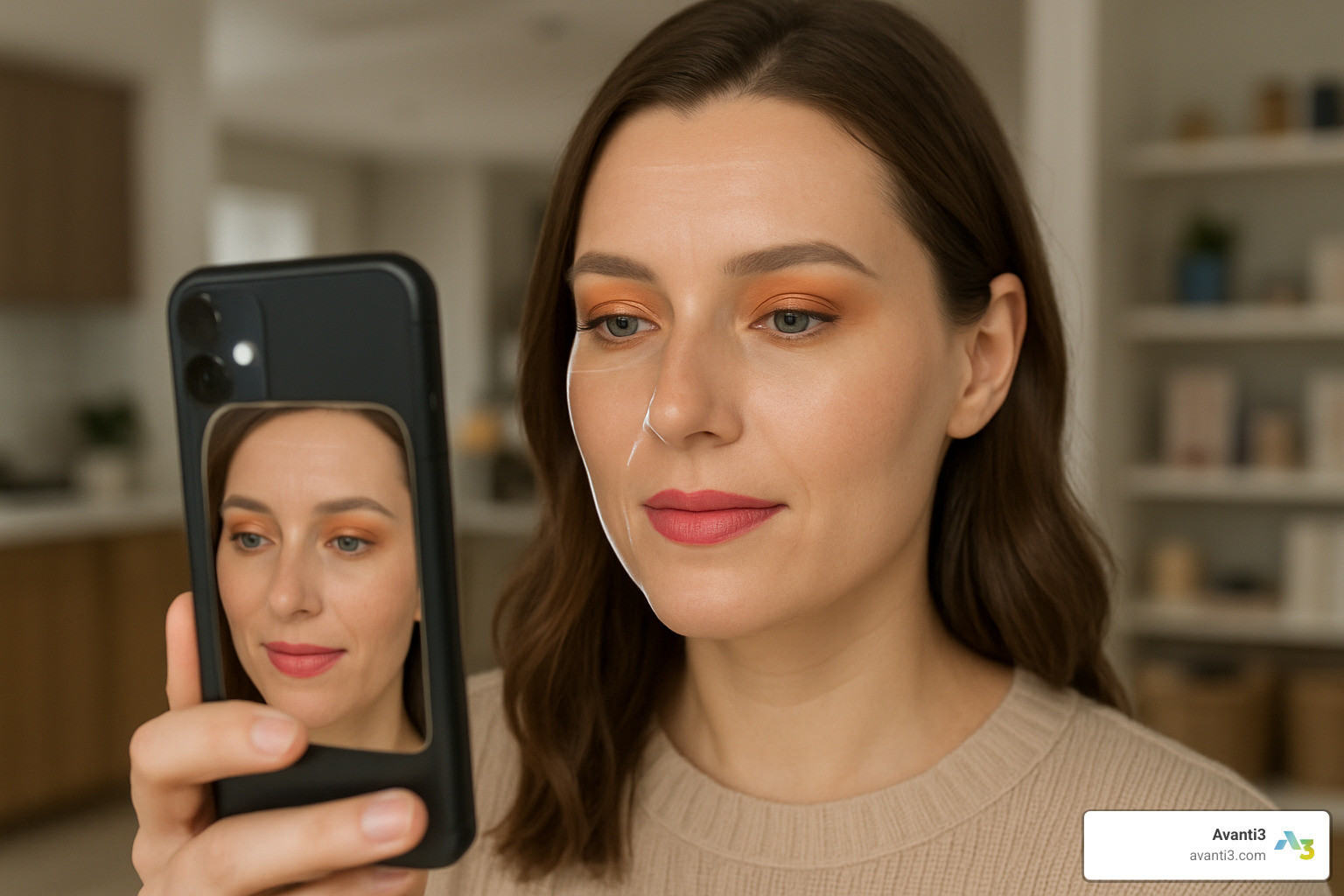
Emerging Trends Shaping Immersive Brand Experiences
The world of AR VR for brands is evolving at lightning speed, with exciting innovations reshaping how customers connect with products and experiences. It’s like watching science fiction become reality right before our eyes.
Spatial computing is leading this revolution, with Apple’s Vision Pro representing a giant leap forward in mixed reality. This sleek device blends AR and VR capabilities with unprecedented fidelity, potentially becoming the catalyst that brings immersive experiences into everyday life.
Creating 3D content – once a major hurdle for many brands – is becoming dramatically more accessible thanks to AI. What used to require specialized teams and significant budgets can now be generated quickly and affordably, opening immersive marketing to businesses of all sizes.
“The democratization of 3D content creation is a game-changer,” notes a digital innovation expert. “Brands that once couldn’t afford to enter this space can now create stunning immersive experiences with a fraction of the resources.”
WebAR continues gaining momentum as a frictionless entry point to augmented experiences. By eliminating app downloads, browser-based AR removes a major adoption barrier. No wonder WebAR commerce is projected to grow by a staggering 230% over the next three years.
The expanding 5G network infrastructure boosts what’s possible with AR and VR, especially for location-based experiences. With minimal latency and higher bandwidth, brands can now deliver complex, real-time augmented experiences that would have buffered endlessly just a few years ago.
Digital twins – virtual replicas of physical stores, products, and experiences – are blurring the boundaries between digital and physical retail. These detailed virtual environments let customers explore products from anywhere, creating shopping experiences that feel remarkably real.
Sustainability visualization represents a particularly meaningful application, as AR VR for brands can make invisible environmental benefits tangible. When customers can actually see the positive impact of eco-friendly choices, abstract sustainability claims become concrete and compelling.
Meanwhile, the metaverse concept continues evolving, with brands creating persistent virtual spaces where customers can interact with products and each other in increasingly sophisticated ways. While the full vision remains developing, early adopters are already establishing valuable virtual presences.
For deeper insights into these cutting-edge approaches, explore our AR VR Immersive Experiences page.
Vision Pro & Spatial Commerce
Apple’s ambitious entry into mixed reality with Vision Pro signals what many believe is an inflection point for immersive commerce. The device’s exceptional display technology enables product visualization so realistic it can genuinely replicate the in-store experience – particularly for fashion, accessories, and beauty products.
What makes Vision Pro especially compelling for brands is its intuitive interface. Natural hand tracking eliminates clunky controllers, creating shopping experiences that feel instinctive and familiar. Customers can simply reach out and interact with virtual products as they would in a physical store.
Perhaps most valuable from a marketing perspective is the device’s sophisticated analytics capabilities. Vision Pro tracks not just deliberate interactions but also gaze patterns and emotional responses, offering unprecedented insight into how consumers truly engage with products.
As one luxury brand CEO participating in early Vision Pro experiences remarked: “This isn’t just another device—it’s a fundamentally new way to experience products that could redefine what ‘trying before buying’ means in digital commerce.”
Mixed Reality Social Shopping
Shopping has always been inherently social, and now immersive technologies are elevating this aspect in fascinating ways. Rather than scrolling through 2D images alone, friends can now shop together in virtual environments, seeing each other’s avatars and reactions to products in real-time.
AR VR for brands is also changing influencer marketing. Digital creators and brand ambassadors can appear as 3D holograms in customers’ physical spaces through AR, providing personalized recommendations that feel remarkably like having a personal stylist in your home.
Limited-edition product launches are becoming global moments through simultaneous physical and augmented reality “drops.” These coordinated releases create shared excitement and urgency that drives immediate action.
“When we launched our first AR sneaker drop that friends could experience together, engagement was 4× higher than our traditional social campaigns,” explained the Social Commerce Director at a major fashion brand. “The shared experience created FOMO that drove immediate action.”
Global Insights: China & Beyond
Looking globally, China continues leading the way in innovative AR/VR commerce applications, offering valuable lessons for brands worldwide.
The integration of AR try-on experiences directly within WeChat Mini-Programs creates seamless findy-to-purchase journeys within China’s dominant super-app. This frictionless approach eliminates barriers between inspiration and transaction.
Luxury brands in China have mastered using AR gaming mechanics to engage younger consumers without diluting their premium positioning. These gamified experiences have achieved up to 3× the engagement of traditional luxury advertising while maintaining brand prestige.
Chinese platforms have also pioneered the combination of live streaming with real-time AR product visualization. These highly engaging shopping experiences drive remarkable conversion rates by merging entertainment, social proof, and immersive product demonstration.
Smart global brands recognize that cultural preferences significantly impact AR/VR engagement. The most successful immersive experiences are thoughtfully adapted for local markets rather than simply translated.
For more insights on global AR engagement trends, see this research on AR shopping trends.
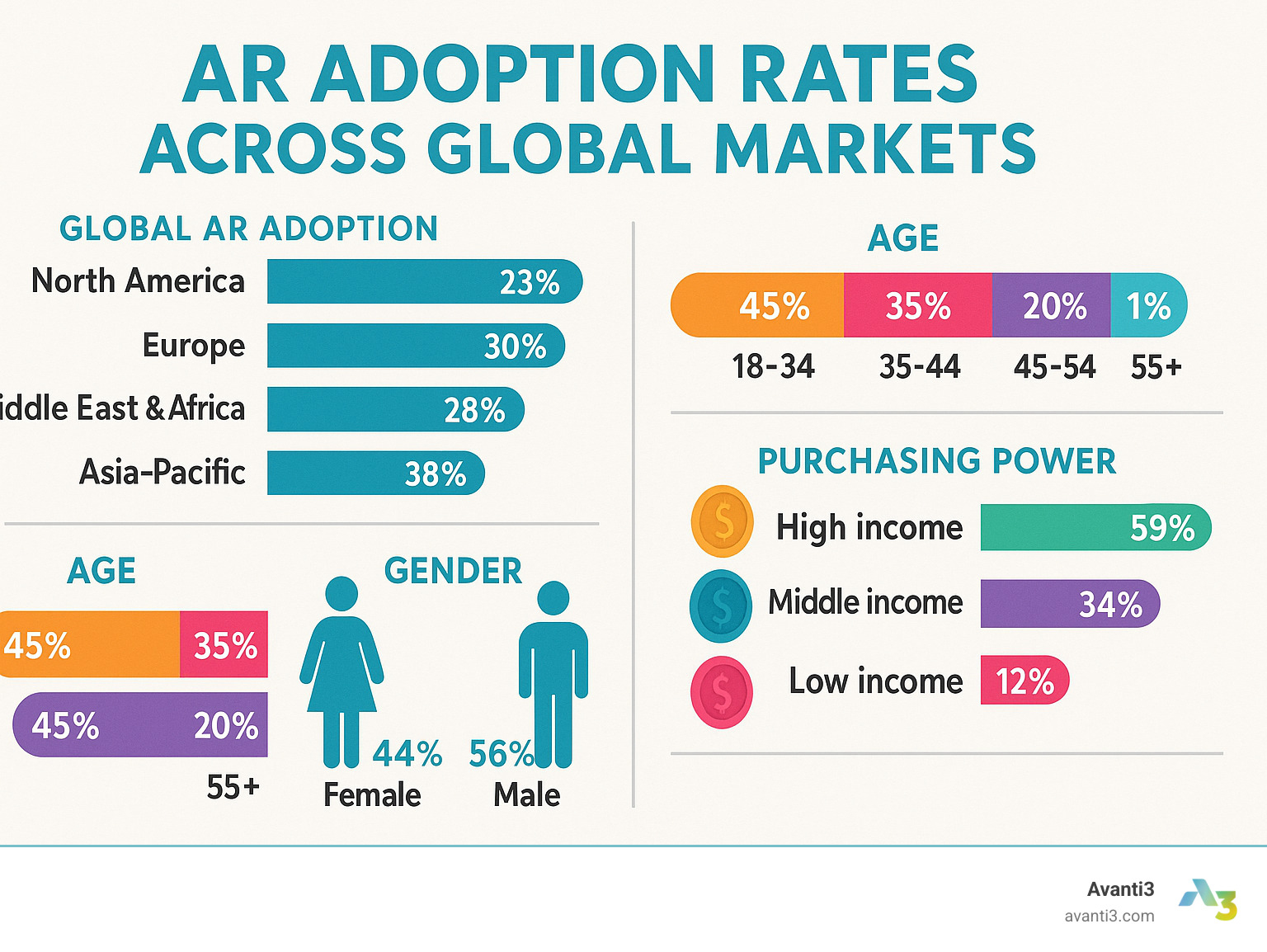
Frequently Asked Questions about AR VR for Brands
What equipment do customers need to access brand AR or VR experiences?
One of the most common questions brands ask me is about the technical barriers for their customers. The good news is that AR experiences are surprisingly accessible today.
For AR experiences, most customers already have everything they need in their pocket. Any smartphone or tablet from the last 5 years will work perfectly fine. If you’re creating WebAR experiences (my personal recommendation for most brands starting out), customers simply need a compatible browser like Chrome, Safari, or Firefox – no app download required. For app-based AR, they’ll need enough storage space, while social AR experiences work through platforms they likely already use daily like Snapchat, Instagram, or TikTok.
VR is a bit more demanding, but options exist for various commitment levels. Full VR experiences require dedicated headsets like Meta Quest, PlayStation VR, or Valve Index. For simpler VR, customers can use their smartphone with an inexpensive cardboard or plastic viewer. There are even web-based VR experiences that work with just a compatible browser, though a headset improves the immersion significantly.
I love how Nike’s Technology Director put it: “The most successful AR experiences meet customers where they already are—on their existing devices and platforms—rather than requiring new hardware investments.” This customer-first thinking is exactly what separates gimmicky tech from truly valuable brand experiences.
How can smaller brands afford AR VR activations?
I frequently work with brands who assume AR VR for brands is only for companies with massive budgets. That might have been true five years ago, but the landscape has completely transformed.
WebAR has been a game-changer for smaller brands. These browser-based experiences eliminate app development costs while delivering nearly identical functionality. Many of my clients start here and are amazed by the results.
Social AR platforms offer another accessible entry point. Tools like Snapchat’s Lens Studio and Meta’s Spark AR are free to use and let you tap into massive existing user bases. One boutique fashion brand I worked with created a virtual try-on filter that reached 200,000 people in its first week – all without a dedicated app.
Template solutions have also dramatically reduced costs. Rather than building from scratch, brands can customize existing frameworks for their specific products. Focus on creating a single standout feature rather than trying to build a comprehensive experience all at once.
Perhaps my favorite approach for budget-conscious brands is leveraging user-generated content. Design AR experiences that naturally encourage customers to create and share, extending your reach organically through their networks.
As one marketing director told me after their first campaign: “Our AR experience cost less than a photoshoot but generated 5x the engagement of our traditional product photography.” That’s the kind of ROI that makes these technologies accessible to brands of all sizes.
How do I measure ROI on an AR VR campaign?
Measuring return on investment for immersive experiences requires looking beyond traditional metrics, but it’s absolutely possible to quantify their impact.
I always recommend tracking both engagement metrics and business outcomes. For engagement, look at total experience launches, average time spent, interaction rates with specific elements, completion rates, and social shares. These metrics help you understand how compelling your experience is.
The business impact is where things get really interesting. Compare conversion rates between customers who engaged with your AR VR for brands experience versus those who didn’t. Look at impacts on average order value, return rate reductions, improvements in brand recall and sentiment, and customer acquisition costs through these channels.
For ongoing experiences, I’ve had great success implementing simple A/B tests – randomly showing some users the immersive experience and others a traditional one, then comparing outcomes. This approach provides clear evidence of the technology’s impact.
One of my favorite insights comes from L’Oréal’s Analytics Director: “The real ROI of AR isn’t just in immediate sales lift—it’s in the rich first-party data we collect about customer preferences that informs everything from product development to personalization.”
This is what makes AR VR for brands so powerful – beyond the immediate engagement, you’re gathering unprecedented insights into how customers interact with your products. That data becomes a competitive advantage that pays dividends far beyond the initial campaign.
Conclusion
The world of AR VR for brands is changing at lightning speed, opening doors to connections with customers that simply weren’t possible before. Throughout this guide, we’ve seen that these technologies aren’t just shiny objects—they’re powerful tools that deliver real business results when used thoughtfully.
What does this mean for your brand? Here’s what matters most:
Start with purpose, not technology. The most successful immersive experiences begin with clear business objectives that support your broader marketing strategy. Ask yourself: “What customer problem are we solving?” before asking “How can we use AR?”
Meet your audience where they already are. Most customers aren’t ready to invest in expensive VR headsets, but they all have smartphones capable of delivering compelling AR experiences. The beauty of WebAR is that it works right in a browser—no app download required.
Think in journeys, not moments. Rather than creating a standalone AR filter or VR experience, consider how immersive technology can improve each stage of your customer’s relationship with your brand—from findy through purchase and beyond.
The numbers tell a compelling story. With 69% of consumers viewing AR as the future of shopping but only 48% of retailers feeling prepared to implement these technologies, there’s a significant opportunity for brands willing to take the leap. This gap won’t last forever—early adopters are already building valuable expertise and customer data.
I’ve seen how brands that accept immersive technologies thoughtfully can transform customer relationships. One fashion retailer we worked with started with a simple virtual try-on experience that reduced return rates by 26% while collecting invaluable data on customer style preferences that informed their entire product development process.
At Avanti3, we believe the future of brand engagement lives at the intersection of physical and digital worlds. Our approach combines Web3 technologies like NFTs, blockchain, AR/VR, and AI to create experiences that don’t just capture attention—they create lasting connections and drive measurable business outcomes.
The truth is, the line between digital and physical is blurring more each day. The brands that recognize and accept this reality now will be the ones that win hearts, minds, and wallets tomorrow.
Ready to explore how immersive technologies can transform your customer experience? Visit our Digital Experience Design page and schedule a strategy call today. Let’s build something amazing together.


